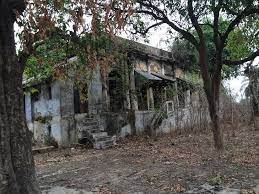One Brick At A Time: UP Government’s Mission to Strengthen Ayodhya’s Ganga-Jamuni Culture and Nawabi Legacy
The UP government plans to breathe new life into the buildings from the Nawabi period in the holy city and has released a sum of Rs 70 crore as the project’s maiden payment in what might be seen as an effort to further reinforce Ayodhya’s Ganga-Jamuni culture and preserve the rich heritage of the Nawabs of Awadh.
The impressive formal palace of Nawab Shuja-Ud-Daulah, who governed Awadh from 1756 to 1775, is Kothi Dilkusha, located in Ayodhya, formerly known as Faizabad, the former capital of Awadh. The alteration will be made to this historic building first.
According to the proposal, Dilkusha Kothi would be revived initially. Nitish Kumar, the district magistrate of Ayodhya, said, “We are attempting to enlist organizations that can repair the building utilizing traditional techniques of construction and restoration.
The first stage of the restoration plan, according to representatives of the district administration, will be to fortify the building using iron girders and other base-strengthening methods. There are various places where the plaster is flaking off, therefore plastering work will be done after this, according to the authorities.
Following this, landscaping work and aesthetic projects will be carried out, including lighting up the Kothi’s front and the surroundings around it. The Kothi’s surrounding area will be transformed into a contemporary garden, according to officials. An official said, “There are also plans to turn the Kothi into a museum.”
A beautification project will be started, as part of which the Kothi’s front and the area around it will be well-lit and landscaped. (News18)
In addition to Dilkusha, the state government intends to repair four gates from the 18th century that are important to Ayodhya’s history.
The four gates, popularly known as “Chaar Dar,” which were constructed at Faizabad between 1753 and 1775 by Nawab Shuja-ud-Daulah, will be embellished. The DM said that lime, mortar, surkhi, and lakhauri bricks will be used only in the repair process, which would follow traditional construction methods.
Dilkusha Kothi and the gates will become a top tourist destination after being restored. The repair efforts received praise from Awadh historians as well.
It’s good, I suppose. I’m glad that the relocation will not only breathe new life into the dilapidated building but also educate the next generation about their heritage. When he ruled Awdh from 1754 to 1775, Nawab Shuja-Ud-Daulah had his official residence in Dilkusha. After Independence, the bungalow, which also includes mud barracks where forces once lived, was given to the Central Bureau of Narcotics, leading to the nickname “Afeem Kothi” among locals. The office that was established to prevent the smuggling of opium was shut down in 2012 and has been abandoned ever since, according to renowned historian Roshan Taqui, the author of several books on the Nawabs of Awadh.
He claimed that the gates are also a significant aspect of Nawabi heritage and that prompt restoration will prevent them from fading into obscurity.







